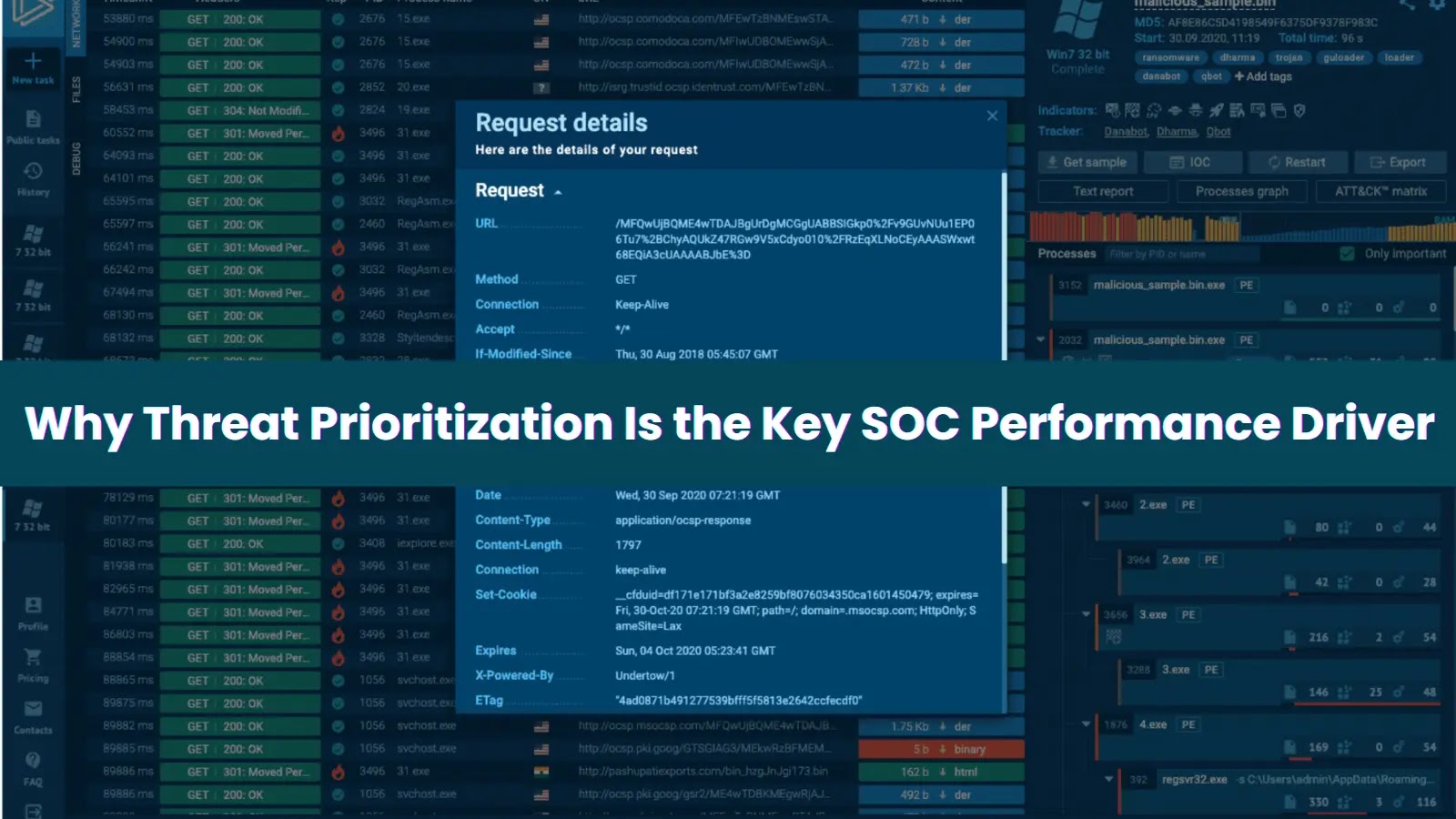
Why Threat Prioritization Is the Key SOC Performance Driver
In the high-stakes world of cybersecurity, Security Operations Centers (SOCs) are on the front lines, battling an ever-increasing barrage of threats. Yet, a fundamental challenge persists: despite an explosion of data and sophisticated detection tools, many SOCs struggle to convert this abundance into effective action. Security teams are drowning in alerts, their focus fragmented, and critical incidents often get lost in the noise. This isn’t just inefficient; it significantly elevates business risk and impacts the bottom line. The core issue? A lack of robust threat prioritization.
The Alert Overload Paradox
CISOs face a daily paradox. Modern security infrastructures generate hundreds, even thousands, of alerts each day. Endpoint Detection and Response (EDR), Security Information and Event Management (SIEM), Intrusion Detection Systems (IDS), and various other tools constantly flag potential issues. While this wealth of information is intended to bolster defenses, without adequate prioritization, it becomes a liability. Security analysts, overwhelmed by the sheer volume, can easily suffer from alert fatigue. This leads to a decreased ability to distinguish legitimate threats from benign anomalies, causing critical incidents to be overlooked or delayed.
The Cost of Unprioritized Threats
The financial and operational repercussions of failing to prioritize threats are substantial. Unidentified or delayed responses to significant threats can lead to:
- Increased dwell time: Attackers often operate undetected for extended periods, escalating access and damage.
- Data breaches: Sensitive information can be exfiltrated, leading to regulatory fines, reputational damage, and loss of customer trust.
- Business disruption: Ransomware attacks or critical infrastructure compromises can halt operations, incurring significant recovery costs and lost revenue.
- Burnout and attrition: Constant alert fatigue and the pressure of a reactive environment can lead to high turnover rates within SOC teams.
Considering the average cost of a data breach continues to rise, investing in effective threat prioritization isn’t merely a strategic move; it’s a financial imperative for business continuity. For instance, vulnerabilities like CVE-2023-38831, if not prioritized and remediated quickly, could lead to severe exploitation, demonstrating the direct link between prioritization and breach prevention.
What is Threat Prioritization?
Threat prioritization is the strategic process of evaluating and ranking security alerts and vulnerabilities based on their potential impact, likelihood of exploitation, and relevance to the organization’s unique risk profile. It moves beyond simply identifying threats to understanding which ones demand immediate attention and resource allocation. This involves a blend of automated tools, threat intelligence, and human analyst expertise to cut through the noise and surface the most critical risks. For example, a critical vulnerability (CVE-2023-34036) affecting a public-facing web server would receive a much higher priority than a low-severity informational alert on an isolated test environment.
Key Drivers of Robust Threat Prioritization
Effective threat prioritization is built upon several foundational elements:
- Contextual Awareness: Understanding the business impact of an affected asset is crucial. Is it a critical revenue-generating system, a public-facing application, or an internal development server?
- Threat Intelligence Integration: Leveraging real-time threat intelligence feeds allows SOCs to assess if a detected threat is actively being exploited in the wild or targets specific industries.
- Vulnerability Management: A strong vulnerability management program feeds into prioritization by identifying and categorizing exploitable weaknesses in the environment.
- Attack Path Modeling: Understanding potential attack vectors helps prioritize threats that are part of a larger, more impactful attack chain.
- Automation and Orchestration: Security Orchestration, Automation, and Response (SOAR) platforms can automate initial triage, gather additional context, and route high-priority alerts to the appropriate teams faster.
- Risk-Based Scoring: Implementing a scoring system that considers factors like CVSS scores (e.g., for CVE-2023-46805), asset criticality, and threat actor intent helps quantify risk effectively.
Transforming SOC Performance with Prioritization
Implementing a robust threat prioritization framework fundamentally transforms a SOC’s operational efficiency and effectiveness:
- Improved Incident Response Times: By focusing on the most critical alerts, analysts can initiate response procedures faster, reducing potential damage.
- Optimized Resource Allocation: SOC personnel and tools are directed towards the threats that matter most, preventing resource waste on low-impact events.
- Reduced Mean Time to Detect (MTTD) and Mean Time to Respond (MTTR): Proactive prioritization directly contributes to quicker detection and resolution of significant incidents.
- Enhanced Analyst Productivity and Morale: Reducing alert fatigue and providing clear direction empowers analysts, making their work more impactful and less stressful.
- Proactive Risk Reduction: Prioritization shifts the SOC from a purely reactive stance to a more proactive one, addressing potential issues before they escalate.
- Better Alignment with Business Objectives: By prioritizing threats based on business impact, the SOC directly contributes to maintaining operational continuity and protecting key assets.
Conclusion
The sheer volume of security alerts is a reality for modern SOCs. However, the inability to discern true threats from benign noise is no longer sustainable. Threat prioritization is the strategic linchpin that enables SOCs to move beyond merely detecting problems to actively mitigating the most significant risks. By integrating contextual data, threat intelligence, and automation, organizations can empower their security teams to focus on what truly matters, bolstering defenses, reducing operational costs, and ultimately safeguarding the business against an ever-evolving threat landscape. Prioritization isn’t just a best practice; it’s the defining factor for a high-performing and resilient security operation.





